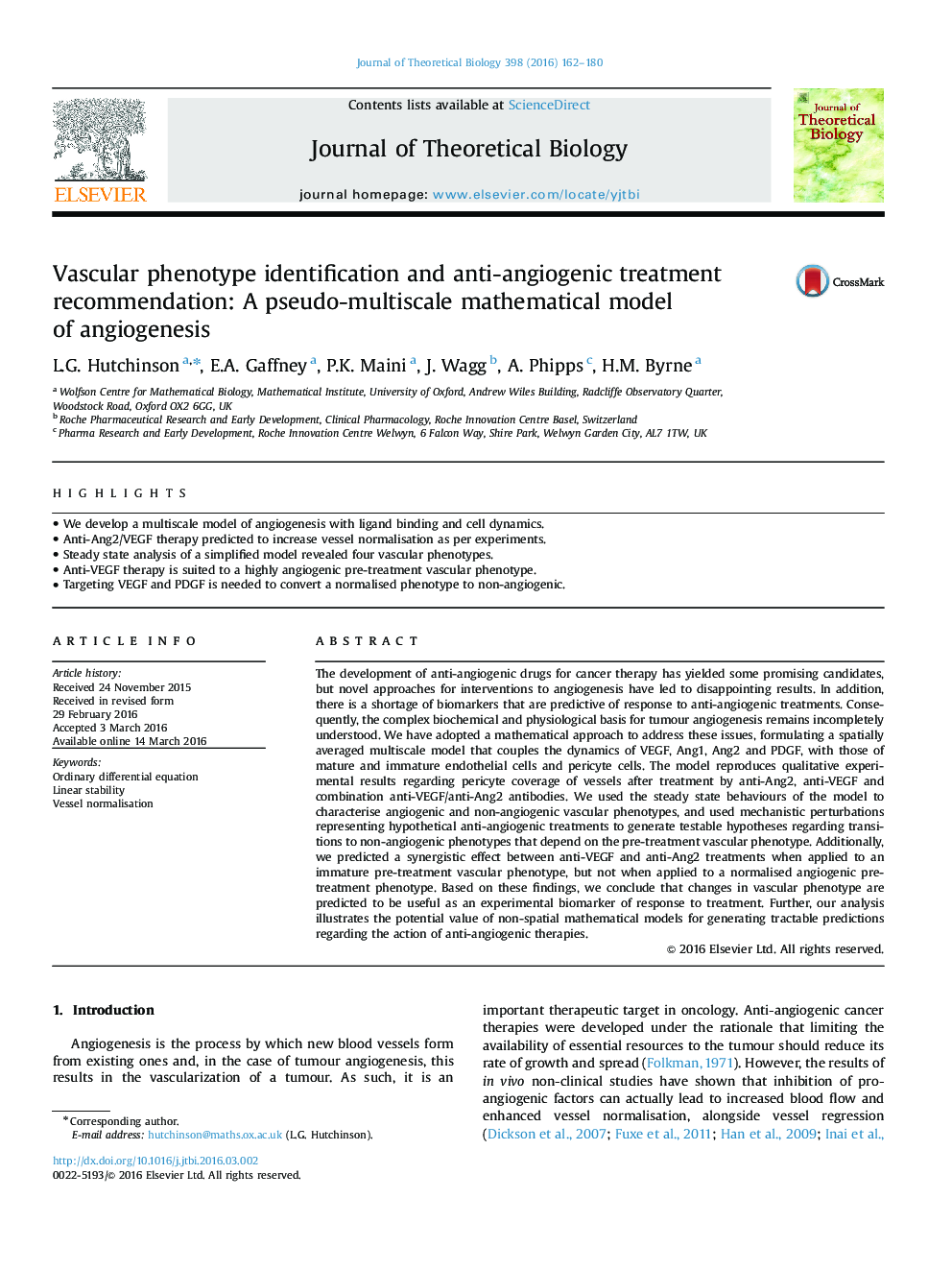| کد مقاله | کد نشریه | سال انتشار | مقاله انگلیسی | نسخه تمام متن |
|---|---|---|---|---|
| 4495828 | 1623812 | 2016 | 19 صفحه PDF | دانلود رایگان |
• We develop a multiscale model of angiogenesis with ligand binding and cell dynamics.
• Anti-Ang2/VEGF therapy predicted to increase vessel normalisation as per experiments.
• Steady state analysis of a simplified model revealed four vascular phenotypes.
• Anti-VEGF therapy is suited to a highly angiogenic pre-treatment vascular phenotype.
• Targeting VEGF and PDGF is needed to convert a normalised phenotype to non-angiogenic.
The development of anti-angiogenic drugs for cancer therapy has yielded some promising candidates, but novel approaches for interventions to angiogenesis have led to disappointing results. In addition, there is a shortage of biomarkers that are predictive of response to anti-angiogenic treatments. Consequently, the complex biochemical and physiological basis for tumour angiogenesis remains incompletely understood. We have adopted a mathematical approach to address these issues, formulating a spatially averaged multiscale model that couples the dynamics of VEGF, Ang1, Ang2 and PDGF, with those of mature and immature endothelial cells and pericyte cells. The model reproduces qualitative experimental results regarding pericyte coverage of vessels after treatment by anti-Ang2, anti-VEGF and combination anti-VEGF/anti-Ang2 antibodies. We used the steady state behaviours of the model to characterise angiogenic and non-angiogenic vascular phenotypes, and used mechanistic perturbations representing hypothetical anti-angiogenic treatments to generate testable hypotheses regarding transitions to non-angiogenic phenotypes that depend on the pre-treatment vascular phenotype. Additionally, we predicted a synergistic effect between anti-VEGF and anti-Ang2 treatments when applied to an immature pre-treatment vascular phenotype, but not when applied to a normalised angiogenic pre-treatment phenotype. Based on these findings, we conclude that changes in vascular phenotype are predicted to be useful as an experimental biomarker of response to treatment. Further, our analysis illustrates the potential value of non-spatial mathematical models for generating tractable predictions regarding the action of anti-angiogenic therapies.
Journal: Journal of Theoretical Biology - Volume 398, 7 June 2016, Pages 162–180
